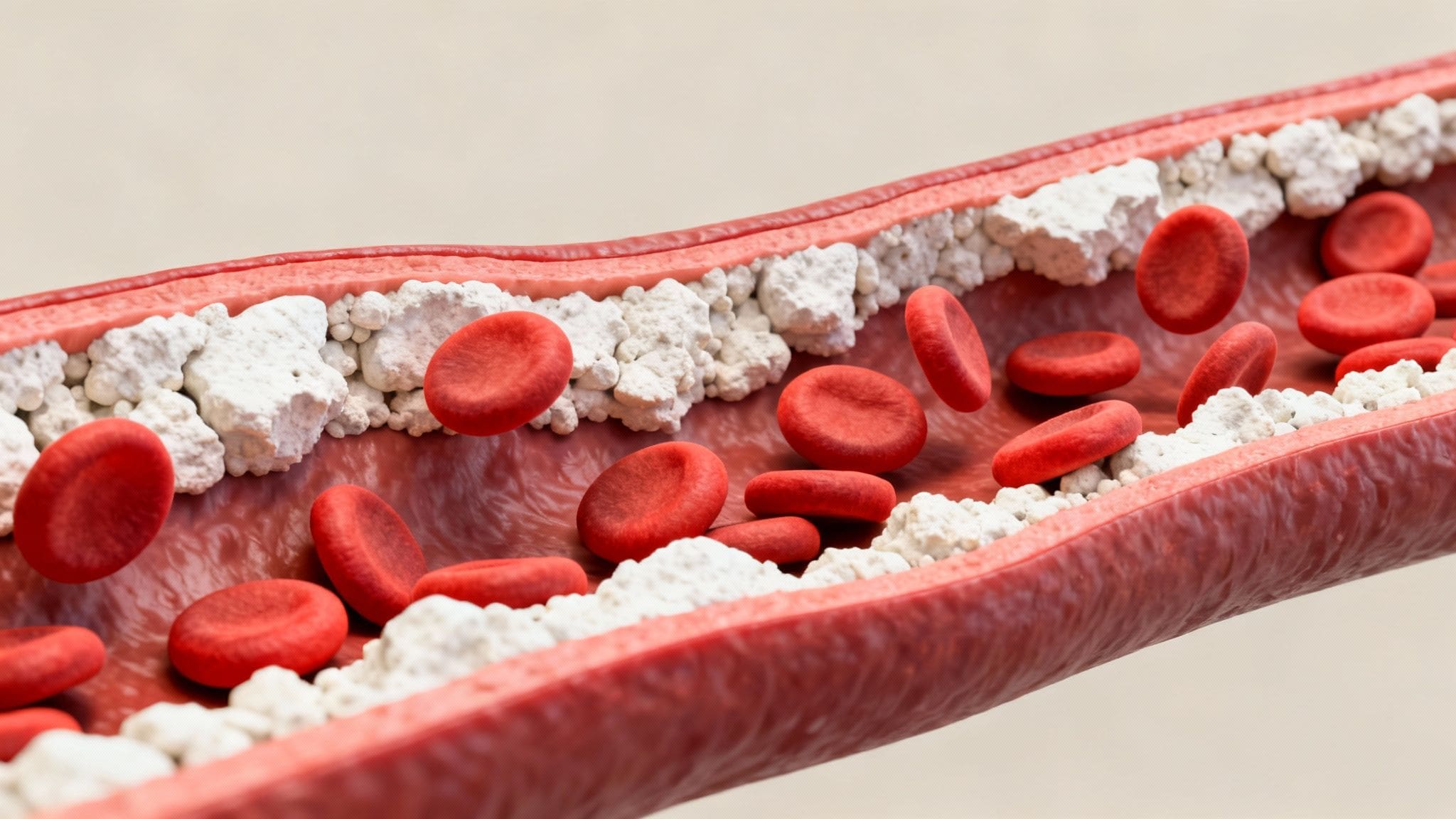Introduction
Coronary artery calcium (CAC) scoring, often called a calcium score or heart scan, has emerged as a powerful tool in optimizing heart health and assessing cardiovascular risk. By using a specialized CT scan, the CAC score quantifies coronary calcification, offering valuable insight for individuals aiming to maintain an optimal heart. Understanding your CAC score can support heart disease prevention, guide treatment strategies, and refine your risk stratification, ensuring proactive steps toward an optimal heart. This article will explore when to get a CAC scan, what your number means, practical next steps, and more, ensuring a comprehensive guide for those passionate about heart health.
What is Explain coronary artery calcium scoring, risk reclassification, costs, radiation, and next steps after results.?
Calcium scoring, or coronary artery calcium (CAC) scoring, is a noninvasive imaging method that uses a computed tomography (CT) scan to detect and measure the buildup of calcified plaque in the coronary arteries. First described in the 1990s, the technique rapidly gained clinical relevance for its ability to uncover early signs of atherosclerosis before symptoms arise. The quantified CAC score helps reclassify heart disease risk, especially in individuals who fall into intermediate-risk categories where treatment decisions may be unclear (Hecht, 2018, Budoff et al., 2018).
Benefits and Outcomes in Heart Disease
CAC scoring supports heart health by offering a precise, individualized measurement of coronary calcification, which is a direct marker of atherosclerosis. Studies demonstrate that adding CAC scores to traditional risk factors improves prediction of cardiovascular events and can prevent unnecessary medications in low-risk individuals (Forrest et al., 2021). Furthermore, CAC scoring aids in risk reclassification — helping providers tailor interventions more effectively to support an optimal heart (Greenland et al., 2018). It also helps clarify next steps post-testing: individuals with a zero CAC score have an extremely low risk of major heart events, while those with higher scores may benefit from statins, more aggressive lifestyle changes, or further testing (
Blaha et al., 2016). CAC scoring is associated with only a small dose of radiation (about 1 mSv) and is generally affordable, with prices ranging from $100 to $400 in the United States (Hecht, 2018).
Research Insights
Recent studies reinforce the role of CAC scoring in both primary and secondary prevention. The 2018 ACC/AHA Cholesterol Guidelines recommend CAC testing for adults 40–75 with uncertain cardiovascular risk, as a zero score allows patients to safely avoid statin therapy (Grundy et al., 2018). A large multi-ethnic, prospective cohort (MESA) found that higher CAC predicts future heart attacks better than cholesterol alone (Forrest et al., 2021).
Practical Applications
CAC scoring is especially useful for individuals aged 40–75 who are at intermediate risk for cardiovascular events and are unsure about starting preventive medications like statins. After discussing risks and benefits, your doctor may recommend a CAC scan to better determine your personal risk. There are no dietary preparations, and radiation exposure is minimal and considered safe for most populations (Hecht, 2018). Regular assessment every 5 years may be suggested if your first score is low, though frequency should be personalized. Always consult your healthcare provider for tailored recommendations.
Risks & Limitations
Although CAC scoring provides invaluable data for heart health and optimizing an optimal heart outcome, it does have limitations. The scan can produce false positives/negatives and does not identify soft plaques, which can also cause heart attacks. Overuse may lead to unnecessary anxiety and testing. The small amount of radiation, though considered safe, is a factor for cumulative exposure (Budoff et al., 2018). Additionally, insurance coverage varies, so patients may bear full costs.
Key Takeaways
-
CAC scoring refines cardiovascular risk assessment, improving optimal heart strategies.
-
A zero CAC score indicates very low risk of heart events; higher scores justify preventive therapy.
-
The scan is low-risk and often affordable, supporting heart health without significant side effects.
-
CAC scoring should be interpreted with clinical context for best heart health outcomes.
Frequently Asked Questions
1. Does a high CAC score mean I will have a heart attack?
Not necessarily—a high CAC score indicates a greater burden of atherosclerosis but does not guarantee a heart attack. It helps guide preventive steps (Blaha et al., 2016).
2. Who should consider CAC scoring?
Adults aged 40–75 at intermediate risk, especially when statin treatment is uncertain, may benefit most (Grundy et al., 2018).
3. Is the radiation from a CAC scan safe?
The radiation dose is very low and comparable to yearly background exposure, making it a safe tool for most individuals (Hecht, 2018).
4. How much does a CAC scan cost?
Costs vary but are often between $100 and $400 out of pocket and may not be covered by insurance (Hecht, 2018).
5. How often should I repeat the test?
Most guidelines recommend every five years, but your doctor may personalize this based on your optimal heart needs (Budoff et al., 2018).
Suggested Links
Conclusion
Coronary artery calcium scoring is a proven, cost-effective strategy to improve heart health and reach an optimal heart through better risk assessment and prevention. From determining your long-term risk to informing the need for lifestyle or medication changes, a CAC scan is a personalized tool for proactive cardiovascular care. Consult your doctor to see if a CAC scan aligns with your heart health journey and take the next step to safeguard an optimal heart.



